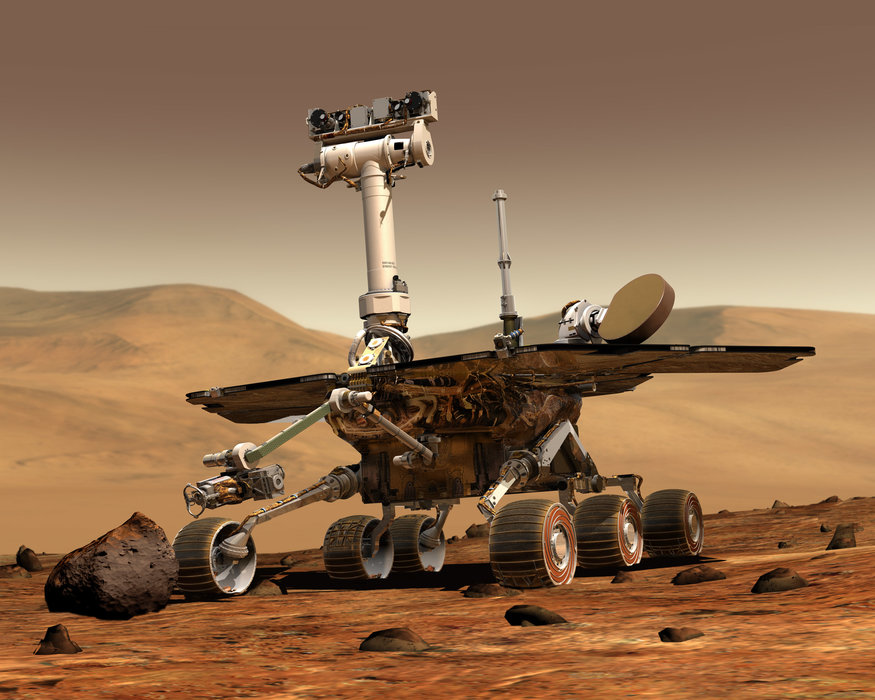www.magazine-industry-usa.com
20
'18
Written on Modified on
Opportunity is waiting for light
The 15-year-old Mars rover Opportunity is fighting another sandstorm.

Over the past few weeks, NASA engineers tried to contact Opportunity several times. However, they haven't heard back from the rover, which is almost 15 years old. The team is now assuming that the charge in Opportunity's batteries has fallen to below 24 V, causing the rover to go into the low-power default mode. In this mode, all subsystems except a mission clock are turned off. The mission clock of the rover is programmed to wake up the computer so that it can check the power.
If the rover's computer finds that the batteries are not sufficiently charged, it goes back into standby mode. Due to the high amount of dust in Perseverance Valley, the mission engineers believe that it is unlikely for the rover to collect enough sunlight to recharge for the next few days.
“maxon motors can handle this”
“Opportunity has braved many minor and major sand storms over the years and has always managed to recover its energy. We have no doubt that our motors will also run without trouble afterwards,” says maxon CEO Eugen Elmiger.
Opportunity's six wheels are driven by maxon DC motors. The Obwalden-based drive specialist supplied 35 units with diameters of 20 and 25 millimeters for the rover. The maxon motors in the wheels, for example, did more than 78 million revolutions each, under extreme environmental conditions and temperature fluctuations from -120 to +25 degrees Celsius. The experiences from this successful project are being used for the development of new motors that will soon fly to Mars on the upcoming Mars missions by NASA and ESA – to join the next scientific race.
www.maxonmotorusa.com

